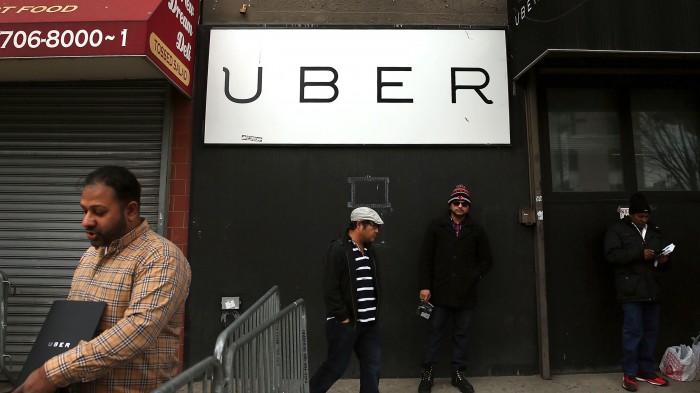Uber Is Engaged in Psychological Warfare with Its Drivers

It’s hard to say no to a manipulative boss—and it may be worse if your boss hides behind an app.
We’ve reported in the past that Uber uses its software to guide the behavior of its drivers. By sending messages at carefully chosen times, for example, the ride hailer can coax people into picking up another fare.
It makes sense for the company to use some of these nudges. After all, it has to corral an army of self-employed workers to provide a slick and efficient service. Gently suggestive approaches are likely to meet a better reception than a set of hard rules.
But a new investigation by the New York Times reveals the extraordinary scale at which it and, to a lesser extent, other ride hailers such as Lyft employ psychological tricks to push drivers as far as possible. The newspaper explains that hundreds of social and data scientists at Uber use “video game techniques, graphics, and non-cash rewards [to] prod drivers into working longer and harder.”
The article is full of examples of how Uber influences it drivers. It notifies them of arbitrary, just-out-of-reach earnings goals when they try to log off; offers new rides before the current trip has finished to encourage them to keep taking jobs; uses invented female personas to win over a largely male workforce; encourages drivers to keep going using video-game-like messages; and awards (worthless) feel-good badges based on customer feedback.
All of which serve to keep drivers driving. And that’s good news for Uber: while it may be in a driver’s interest to call it a day when things get slow, because it’s equivalent to a low hourly rate, the ride hailer would rather they stayed at the wheel. Idle drivers, after all, allow Uber to get rides for customers as quickly as possible. It also means that the company doesn’t have to resort to surge charging if things suddenly get busy, which Uber knows will push customers away from using the service.
As the New York Times points out, using psychological tricks like these probably wouldn’t wash for most regular employers. But because the likes of Uber and Lyft consider their drivers to be self-employed contractors and not employees, that’s not such an issue: Uber argues that its drivers can simply stop working whenever they like. If, that is, they don’t feel pressured by their smartphone into staying on the clock.
Things may yet change. Uber has recently come under incredible fire for its managerial practices, and its CEO, Travis Kalanick, is currently searching for a COO to help him fix issues ranging from discrimination to an accusation that the company stole trade secrets from a competitor. The way that Uber treats and incentivizes its drivers could soon make the list, too.
(Read more: New York Times, “When Your Boss Is an Uber Algorithm,” “It’s Time for Uber to Grow Up,” “In Praise of Efficient Price Gouging”)
Keep Reading
Most Popular
Large language models can do jaw-dropping things. But nobody knows exactly why.
And that's a problem. Figuring it out is one of the biggest scientific puzzles of our time and a crucial step towards controlling more powerful future models.
How scientists traced a mysterious covid case back to six toilets
When wastewater surveillance turns into a hunt for a single infected individual, the ethics get tricky.
The problem with plug-in hybrids? Their drivers.
Plug-in hybrids are often sold as a transition to EVs, but new data from Europe shows we’re still underestimating the emissions they produce.
Stay connected
Get the latest updates from
MIT Technology Review
Discover special offers, top stories, upcoming events, and more.